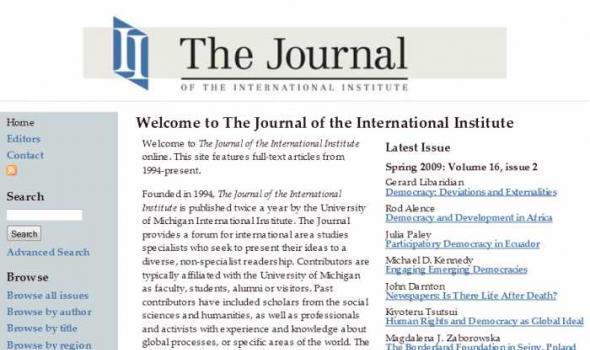Category: Business & Reference, English, Massachusetts
Results
Edward R. Murrow (1908-1965) is best known as a CBS broadcaster and producer during the formative years of U.S. radio and television news programs from the 1930s to the 1950s, when radio still dominated the airwaves although television was beginning to make its indelible mark, particularly in the US. Over the decades, numerous publications have portrayed Murrow as one of the architects of U.S. broadcast news, but in the political climate of recent years, he is increasingly viewed as a defender of rights against McCarthy-type witch hunts. The Life and Work of Edward R. Murrow is an online exhibit featuring Murrow's career from his student days to his work for USIA.
Walter B. Wriston (August 3, 1919 - January 19, 2005) was a banker and former chairman of Citicorp. An expert on commercial banking, Mr. Wriston wrote and spoke widely on topics relating to finance, banking, technology, and international business. Mr. Wriston's career at Citibank/Citicorp spanned nearly forty years. He joined the company in 1946 as a Junior Inspector in the Comptroller's Division. He was assigned to the bank's Overseas Division in 1956, heading the European District for three years, and was named a Senior Vice President in 1958. Mr. Wriston became President and Chief Executive Officer of the bank in 1967 and of the corporation when it was formed in 1968.
Though it is a relatively recent field of study, women's history is inscribed across all of the Harvard Library holdings gathered since 1638. By examining those holdings afresh and querying them in a new and feminist light, the curators of Women Working have aggregated thousands of items that illuminate women's history. The result is a unique, virtual collection, comprising over 650,000 individual pages from more than 3,100 books and trade catalogs, 900 archives and manuscript items, and 1,400 photographs. Women Working, 1800–1930 is a digital exploration of women's impact on the economic life of the United States between 1800 and the Great Depression.
Historical Collections Exhibit As new consumer markets developed following the Civil War, the advertising trade card met the need for an effective national advertising medium and heralded the arrival of an extraordinary variety of manufactured goods newly available to the American public. An exhibition organized by the Historical Collections Department of Baker Library. Search Catalog records for 1,000 of Baker Library's advertising trade cards, with accompanying digital images, are now available through the Visual Information Access (VIA) system, an online catalog of visual resources at Harvard. Baker Library holds more than 8,000 trade cards representing the full range of products and businesses advertised through this medium from the 1870s through the 1890s.
The Human Factor Introduction In the 1930s Harvard Business School colleagues Donald Davenport and Frank Ayres contacted leading businesses and requested photographs for classroom instruction—images Davenport hoped would “reveal the courage, industry and intelligence required of the American working man.” They amassed more than 2,100 photographs, from strangely beautiful views of men operating Midvale Steel’s 9,000-ton hydraulic press to women assembling tiny, delicate parts of Philco radios. Now students, and America’s aspiring corporate managers, had visual data to study “the human factor,” the interaction of worker and machine. But the pictures were more than documentary records.
Introduction Online Exhibition In 1986, Baker Library issued an exhibition catalog titled Coin and Conscience: Popular Views of Money, Credit and Speculation: Sixteenth through Nineteenth Centuries. Catalog of an Exhibition of Prints from the Arnold and S. Bleichroeder Collection, Kress Library of Business and Economics, written by Ruth Rogers, then curator of the Kress Library at Baker Library. The images selected by Ms. Rogers for inclusion in the catalog represent the major thematic divisions of the Bleichroeder Collection , while also displaying its geographic and stylistic diversity. The publication provides introductory text, detailed descriptive information about seventy prints from the collection, an artist index, and a bibliography for further study.


























